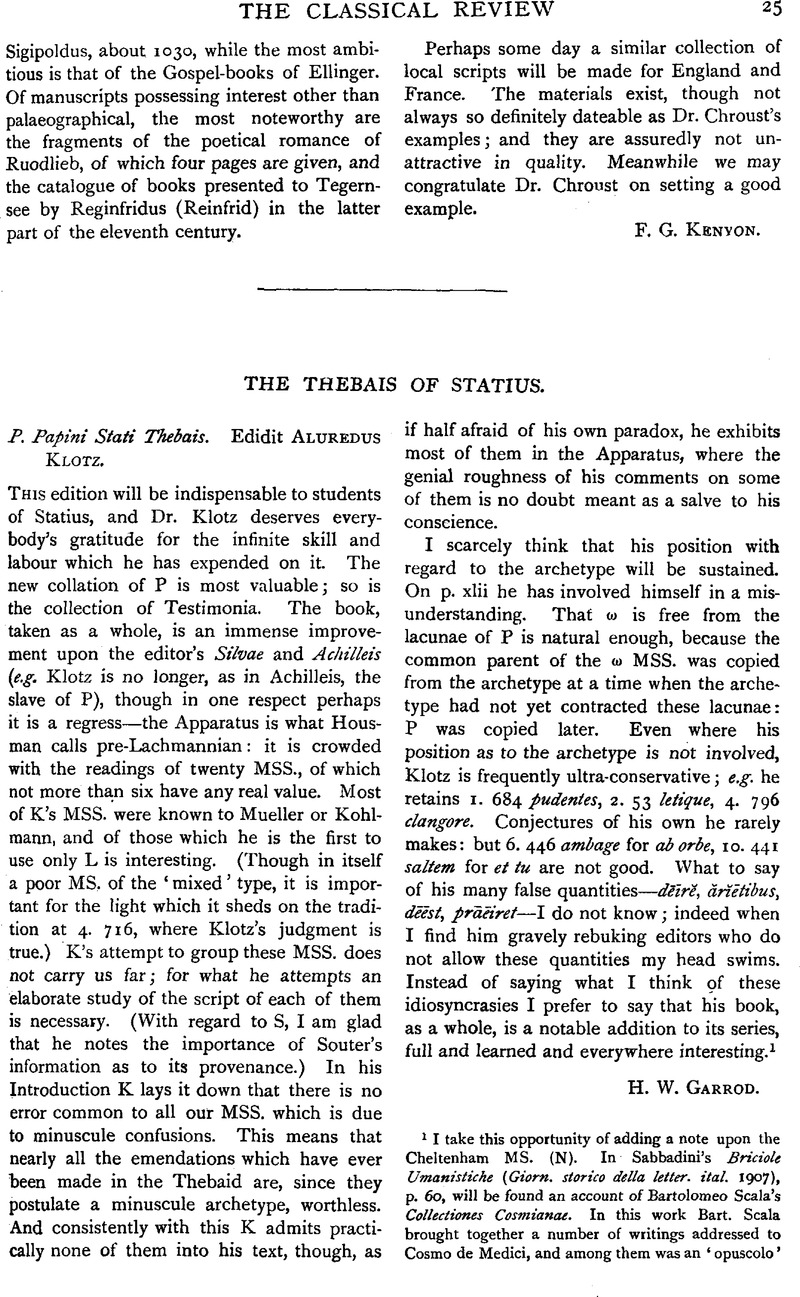No CrossRef data available.
Published online by Cambridge University Press: 27 October 2009

1 I take this opportunity of adding a note upon the Cheltenham MS. (N). In Sabbadini's Briciole Umanistiche (Giorn. storico delta letter. ital. 1907), p. 60, will be found an account of Bartolomeo Scala's Collectiones Cosmianac. In this work Bart. Scala brought together a number of writings addressed to Cosmo de Medici, and among them was an ‘opuscolo’ of Nicolaus Tignosius Fulginas, philosophus et medicus. This is without doubt the Nicolas Fulginas Doc. Artium of the subscription to N. I was therefore right when I supposed that the last leaf of N had been added by a fifteenth century Italian. With the clue supplied to me by Tignosius, I elicited from Jacobilli's Bibliotheca Umbriae the knowledge that this Nicolaus was born at Foligno in 1412, that he taught philosophy at Bologna and Pisa, and died in 1484. As ‘philosophus’ he wrote Commentaries on Aristotle, De Anima, Post. An. and Ethics; as ‘medicus’ a treatise ‘De illis qui octavo mense nascuntur qui ut plurimum moriuntur.’ He had also historical interests, for he wrote De Captura Byzantiiand De Origine Fulginatium.
N thus comes into the circle of the Medicis, and may perhaps once have belonged to the famous Bibliotheca Cosmiana. But in the seventeenth century it would seem to have been in Rome. It was one of the MSS. acquired by the notorious Libri (probably that mentioned -y Kohlmann, p. viii). Libri probably acquired it in a Protestant country—to judge from the erasure of the name of the ‘most excellent cardinal’ who once owned it. (For the expression DNI DNI, used of this cardinal, see the Paris MS., Put. 8066, which has the subscription, ‘Tempore pontificatus sanctissimi ac beatissimi in christo patris et domini dni Papae Pii ii.” The form ‘D.D.’ is common in the 15th century epistles.) Let me in conclusion remark that the Libri Catalogues are still worth study. Perusing them I noticed e.g. that there should be in Cheltenham a MS. of Juvenal of saec. ix. (though N is wrongly given there as saec. ix.).